Breeding of Picardy Sheepdogs is not for the faint hearted and reproductive issues contribute to the breeds rarity worldwide. We have included several articles or studies to alert you to problems you may encounter if intending to breed from your Picard.
For those who do not intend to breed, before you routinely neuter, please research the pros and cons of neutering not only on the health but also the behavioural effects of Spaying or Castration before you make a decision.
You can access the different subjects by clicking on the buttons below
Responsible breeding (courtesy of University of Prince Edward Island)
Dog breeding is – or should be – a big responsibility. Good breeders are caring and knowledgeable about their breed and they invest significant time, thought and research into planning their breedings. In order to reduce the chance of producing offspring with inherited disorders, good breeders conduct the appropriate screening tests on the dogs they breed. They will also put a great deal of effort into raising and socializing the puppies to prepare them for their new homes.
Breeding to avoid inherited disorders
Breeders should ensure that both breeding bitches and stud dogs are screened and certified clear of inherited disorders. They also need to know as much as possible about any health or genetic disorders in the pedigrees of the dogs they are breeding so they can avoid doubling up on any genetic concerns that may be present in the pedigrees of both parents.
Responsible breeders care about the puppies they produce as well as prospective owners. Because they have done the screening tests and made informed choices on breeding pairs, good breeders sell their puppies with a written health guarantee against the inherited disorders for which they have screened. They will also provide a guarantee of overall health and temperament and they take lifetime responsibility for the puppies they have bred. Good breeders will require the purchaser to sign a contract that outlines the obligations of the breeder as well as requirements of the new owner, such as attending puppy and obedience classes, spaying or neutering and general care of the dog.
How can veterinarians help?
Responsible breeders will work closely with their own veterinarian to ensure the general health, reproductive health and genetic stability of their breeding dogs. Veterinarians use many different techniques to ensure that individual dogs are healthy and free of any genetic defects that may affect puppies. For instance, blood samples are used to check for inherited genetic diseases such as von Willibrand disease and other bleeding disorders, swabs of the mouth lining can be use to screen for degenerative myelopathy, and radiographs are commonly used to assess the structural integrity of hips and elbows. Veterinary specialists may also be needed to certify that breeding dogs are free from inherited eye and cardiac disorders.
Every breed has a number of potential inherited, genetic disorders. Veterinarians and their breeder clients will work to minimize the chance that any affected dog enters the breeding program. The ultimate goal is to place healthy, genetically sound, behaviourally competent puppies in appropriate homes with their new owners.
How to recognise good breeders
Reputable breeders proudly show you their dogs and their facilities, they require you to visit and they have endless questions to screen potential puppy buyers. They want to be sure that your lifestyle, knowledge of dogs and attitude are a good fit for that breed and for a particular puppy. Their puppies are raised in their home (not in a barn or garage or even basement) where they become accustomed to household sounds, such as the phone, dishwasher, noisy pots and pans, the doorbell, oven timer, people coming and going. The pups will also receive lots of human socialization.
A good breeder breeds only one or a select few breeds of dog so that they really know the breed(s). They are a member of that breed club and adhere to the club’s Code of Ethics. They participate in dog shows and possibly other dog sports or events. Good breeders will gladly talk to you about their breeding practices – how often they breed, how old or young they breed their bitches and how they raise their puppies. A responsible breeder doesn’t breed their dogs until they reach sexual and physical maturity and stops breeding by middle age, which will vary depending on the breed.
Good breeders will never sell a puppy or dog without meeting you or having someone else meet you. They will expect you to stay in touch with them, send pictures and keep them informed on the progress of your puppy. They will require you to return the dog to the breeder if at any time and for any reason, you cannot keep the dog.
Stay clear of breeders who don’t ask you anything about yourself, your living situation and lifestyle. Avoid breeders who don’t screen their dogs for genetic disorders, or who won’t show you such health clearance certifications. Do not buy from breeders who are selling unregistered ‘purebreds’ or who charge extra for registration papers.
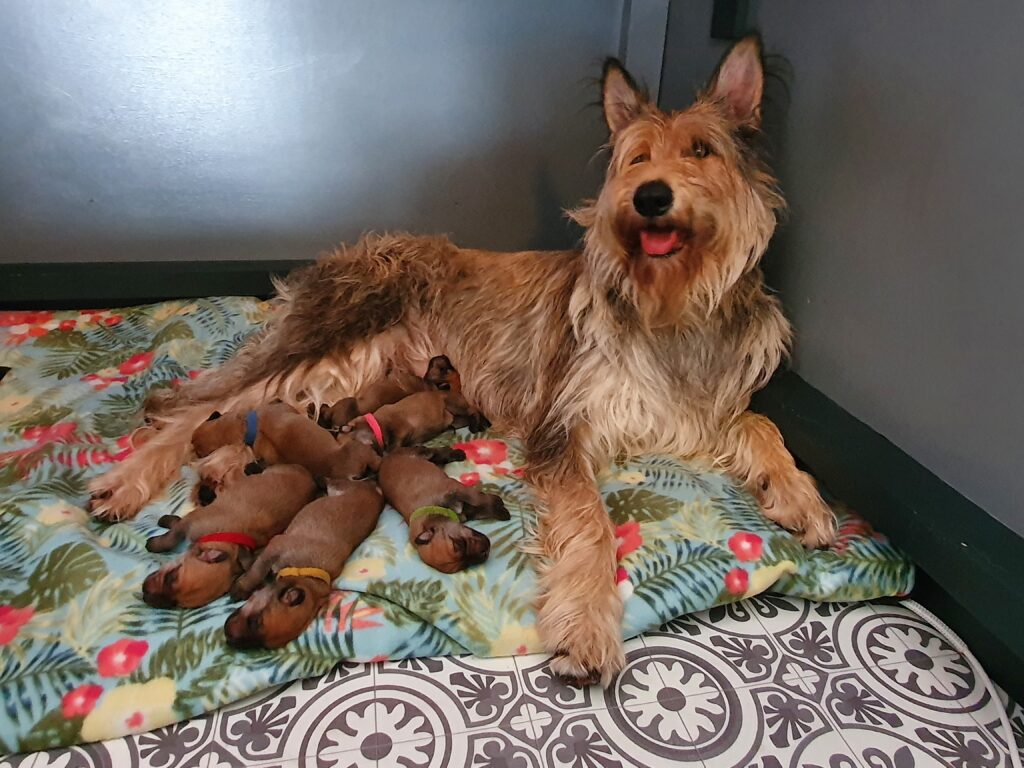
Reproductive Issues (courtesy of Berger Picard Club of America)
The Picardy Sheepdog breed as a whole has been known to be difficult to breed which may be one of the reasons that it continues to be a rare breed even in its country of origin. Breeders through the years and around the world have reported that some Picardy Sheepdogs plainly refuse to breed. Most of the attention has been focused on the females, who may have either chemical or mechanical issues.
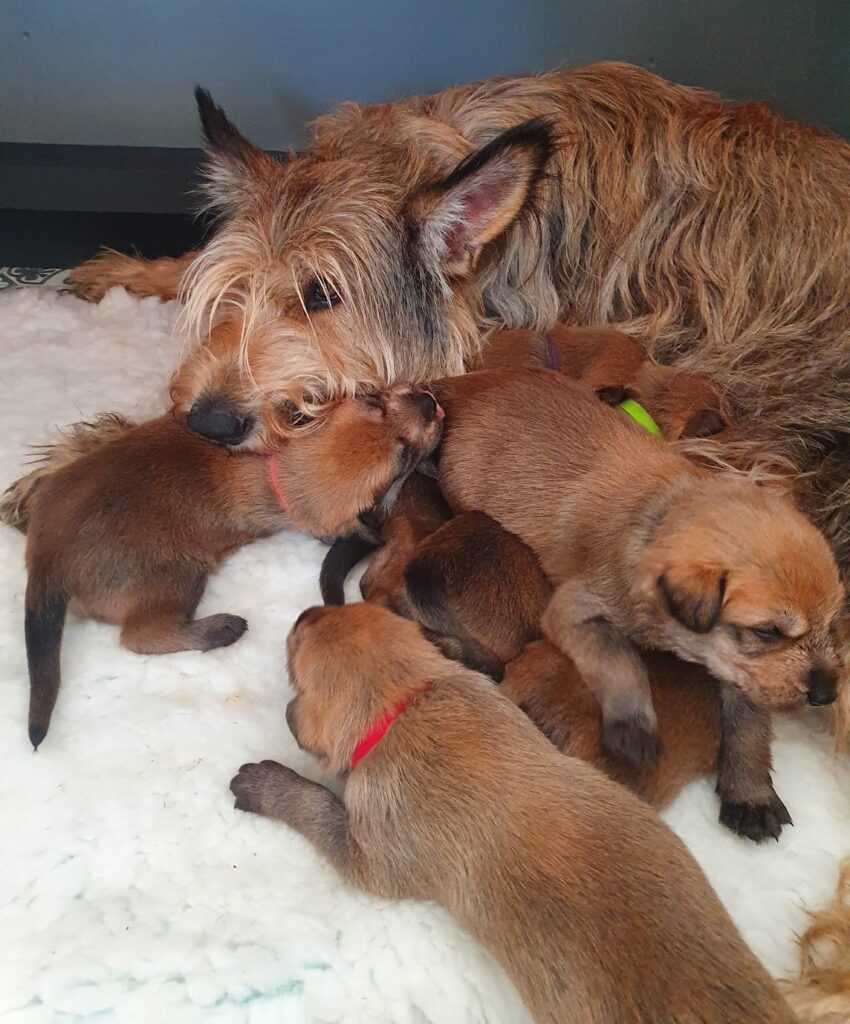
Chemical problems can be anything that has to do with the hormonal messages sent from the brain to the reproductive organs and can lead to irregular heat cycles and pyometra. Irregular heat cycles make breeding difficult unless progesterone levels are tracked carefully.
Once pregnant, another hormonal problem seen in Picardy Sheepdog is uterine inertia. Uterine inertia can be broken down into two types: primary and secondary.
Primary inertia is the killer – the bitch’s cervix may dilate but the uterus never contracts; so the puppies die, because they are not ex-pulsed. If the inertia is not recognized, sepsis can set in and can compromise the ability to breed and, in a worst case scenario, the health of the mother. There have been several reported cases of whole litters being lost because the owners did not realize that their bitches were in labour until it was too late. Often times it was because extremely small litters fail to trigger the hormonal processes.
Secondary uterine inertia describes when the bitch has gone into labour, often delivers a pup or two, then stops contracting. This may be easier to detect and manage, as long as the number of pups still inside is known. At that point Oxytocin is used, and if that fails, a caesarean section should be done and quickly to save the pups.
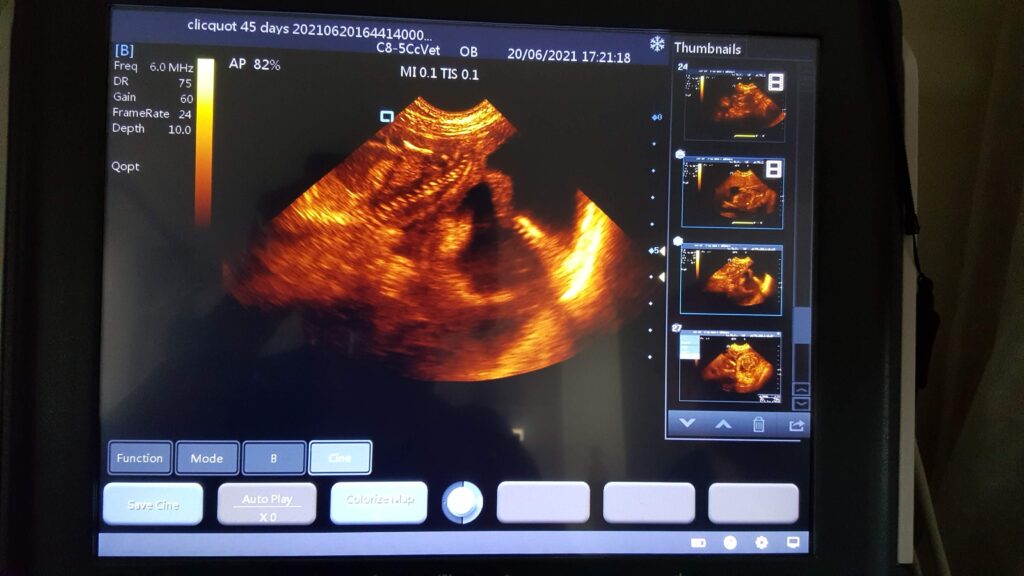
To avoid a disastrous whelping experience, diligent breeders check progesterone levels during heat cycles to pinpoint the date of ovulation and thus a more exact date of expected delivery. During pregnancy, calcium supplements should NOT be given to the bitch, as the high levels of calcium can contribute the uterine muscles inability to contract. Checking the basal temperature twice daily for a sudden drop starting a week before due date can also signal the onset of labour. Any dark greenish discharge denotes separation of the placenta from the uterine wall so if no puppy accompanies this, veterinarian assistance should be sought immediately.
Taking a x-ray about a week before the due date can determine litter size and take some of the guess work out. Many reproductive veterinarians now recommend scheduled c-sections for bitches that have known whelping problems. This avoids the mad midnight dash to the emergency vet.
Mechanical issues associated with the female Picardy Sheepdog involve mainly two issues. One problem is known as the “Vulve Barree” which translates into a locked vulva or recessed vulva.
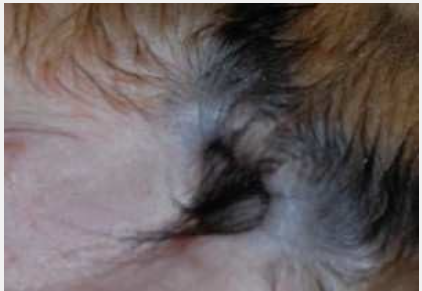
Recessed or inverted vulvas are caused by a piece of skin that covers to different extents the entrance to the vulva, making penetration impossible. There are different degrees of this condition, and just like in many breeds, the vulva may open up after the first heat. In benign cases, this can correct itself after the first whelping. In the more severe cases, the fur at the tip of the vulva looks as if it was coming right out of the lower part of the belly and looks like a very juvenile vulva. In the case of a completely locked vulva, this requires surgical correction.
Apart from breeding issues, this condition can predispose the bitch to urinary tract infections. To lessen the chance of infection, the wick or tuft of hair on the tip of the vulva should be kept trimmed. It is also very important that a pup with this condition is not spayed until she has her first heat cycle because most times the vulva will correct itself as a result of that heat cycle (sometimes it takes 2 cycles to correct but most often only one cycle). If you spay prior to the first heat you could be subjecting the pup to a lifetime of infections.
The other mechanical problem is with vaginal malformations or altered anatomical structures such as imperforate hymen (where the hymen is solid) or dorsoventral septum (where the vagina has a vertical dividing membrane or wall). This congenital issue has been noted by the French club since the 1990’s. Vaginal strictures are not visible, as they are inside the bitch (a good reason for a pre-breeding exam). The bitch can have one or many strictures in the form of fibrous bands at the vulva-vestibule junction or in the vagina.
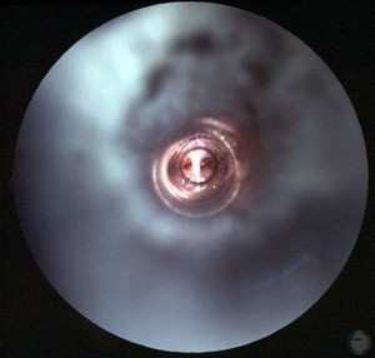
As the canine vagina is very long, the strictures can be in more than one area and prevent penetration of the penis and cause intense pain to the bitch. Depending on the nature of the stricture, they can either be opened manually by a good reproductive vet or surgically opened under aesthesia. When surgical intervention is done, the results are not always the best, as any scarring that occurs can cause more interference. Stretching the stricture open yields the best results.
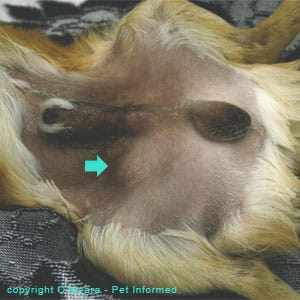
As with all breeds, undescended testicles (cryptochidism) have been seen in the Picardy Sheepdog. Some of these have been high in the abdomen and require more extensive surgery to be removed. This is a highly heritable trait and should not be used for breeding.
There have been a very small number of males that are known to be sterile. The definitive cause is not known, but it has been noticed that dogs in extremely cold climates have been affected. Since environmental factors may greatly decrease sperm counts and motility, stud dogs should not be allowed to lay on cold OR hot ground for extended periods of time. It is also recommended that semen collection for freezing should be done in spring and fall to maximize numbers and quality.
Another rare occurrence that has come up is hermaphrodite puppies. This is where it is difficult to determine if the puppy is a male or female. A vulva looking organ is displaced where the penis would normally be. A recent case, Malou, has been documented.
If your Picard has had any of these issues please take the breed survey to help keep tract of the incidence of these problems. Also if you are breeding your Picard, please bank your Picard’s DNA with AHT so future markers may be found.
Pyometra in Dogs – uterus infection, pus, causes, signs, treatment
Pyometra is defined as an infection in the uterus. The uterus is also known as the womb and is where the developing foetus is located. It is a serious and life threatening condition that must be treated promptly and aggressively.
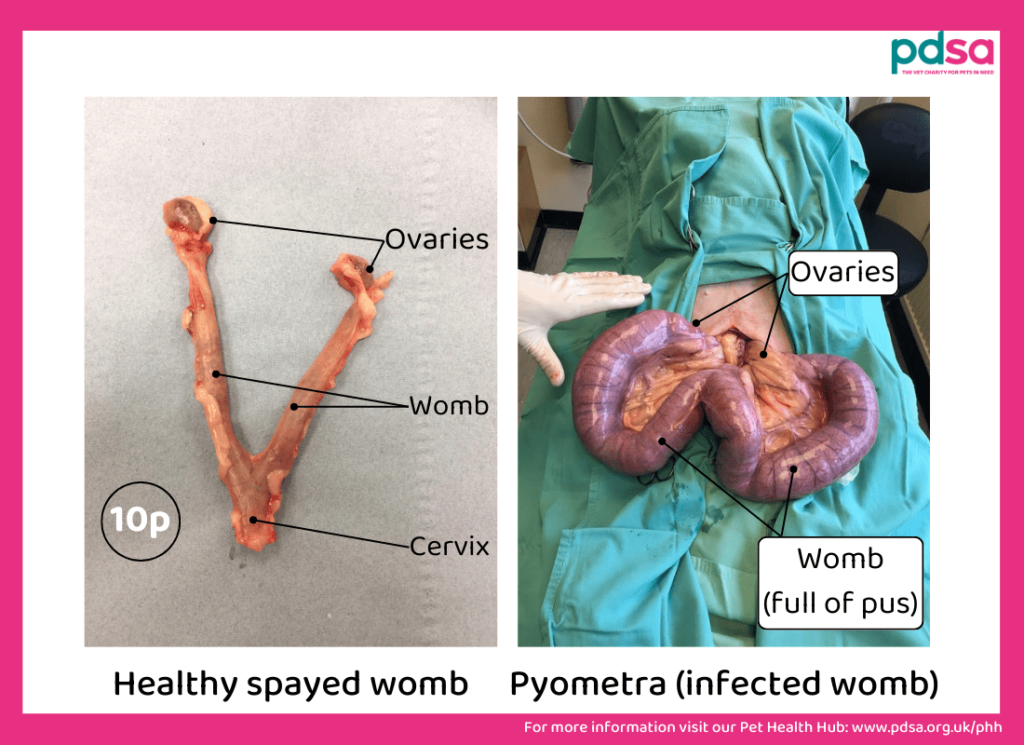
Pyometra is often the result of hormonal changes in the reproductive tract. Following oestrus (“heat”) in the dog, progesterone levels remain elevated for eight to ten weeks and thicken the lining of the uterus in preparation for pregnancy. If pregnancy does not occur for several oestrus cycles, the lining continues to increase in thickness until cysts form within it. The thickened, cystic lining secretes fluids that create an ideal environment in which bacteria can grow. Additionally, high progesterone levels inhibit the ability of the muscles in the wall of the uterus to contract.
Are there other situations that cause the changes in the uterus?
Yes. The use of progesterone-based drugs can do this. In addition, oestrogen will increase the effects of progesterone on the uterus. Drugs containing both hormones are used to treat certain conditions of the reproductive system.
How do bacteria get into the uterus?
The cervix is the gateway to the uterus. It remains tightly closed except during estrus. When it is open, bacteria that are normally found in the vagina can enter the uterus rather easily. If the uterus is normal, the environment is adverse to bacterial survival; however, when the uterine wall is thickened and cystic, perfect conditions exist for bacterial growth. In addition, when these abnormal conditions exist, the muscles of the uterus cannot contract properly. This means that bacteria that enter the uterus cannot be expelled.
When does pyometra occur?
Pyometra may occur in young to middle-aged dogs; however, it is most common in older dogs. After many years of oestrus cycles, the uterine wall undergoes the changes that promote this disease.
The typical time for pyometra to occur is about two to eight weeks after oestrus (“heat cycle”).
What are the clinical signs of a dog with pyometra?
The clinical signs depend on whether or not the cervix is open. If it is open, pus will drain from the uterus through the vagina to the outside. It is often noted on the skin or hair under the tail or on bedding and furniture where the dog has laid. Fever, lethargy, anorexia, and depression may or may not be present.
If the cervix is closed, pus that forms is not able to drain to the outside. It collects in the uterus causing distention of the abdomen. The bacteria release toxins that are absorbed into circulation. These dogs often become severely ill very rapidly. They are anorectic (off food), very listless, and very depressed. Vomiting or diarrhoea may also be present. The
Toxins from the bacteria affect the kidney’s ability to retain fluid. Increased urine production occurs, and the dog drinks an excess of water. This occurs in both open- and closed- cervix pyometra.
How is pyometra diagnosed?
Dogs that are seen early in the disease may have a slight vaginal discharge and show no other signs of illness.
However, most dogs with pyometra are not seen until later in the illness. A very ill female dog that is drinking an increased amount of water and has not been sterilised is always suspected of having pyometra. This is especially true if there is a vaginal discharge or painful, enlarged abdomen.
Dogs with pyometra have a marked elevation of the white blood cell count and often have an elevation of globulins (a type of protein produced by the immune system) in the blood. The specific gravity of the urine is very low due to the toxic effects of the bacteria on the kidneys. However, all of these abnormalities may be present in any dog with a major bacterial infection. If the cervix is closed, radiographs (x-rays) of the abdomen will often identify the enlarged uterus. If the cervix is open, there will often be such minimal uterine enlargement that the radiograph will not be conclusive. An ultrasound examination can also be helpful in identifying an enlarged uterus and differentiating that from a normal pregnancy.
How is pyometra treated?
The preferred treatment is to surgically remove the uterus and ovaries. This is called an ovariohysterectomy (“spey/spay”). Dogs diagnosed in the early stage of the disease are very good surgical candidates. The surgery is only slightly more complicated than a routine spay. However, most dogs are diagnosed when they are quite ill so the surgery is not as routine as the same surgery in a healthy dog. Intravenous fluids are often needed before and after surgery. Antibiotics are also usually required for a period of time after surgery.
If your dog is a valuable breeding female then please contact your vet to discuss alternative options. They are not always successful, and can have some serious side effects.
Behavioural Effects of Spay
The study “Non-reproductive Effects of Spaying and Neutering on Behaviour in Dogs“ utilizes the “Canine Behavioural Assessment and Research Questionnaire (C-BARQ)“, the only peer-reviewed, reliable, standardized method for evaluating and screening dogs for the presence and severity of behavioural problems. The overarching conclusion of the study is:
“For most behaviours, spaying is associated with worse behaviour, contrary to conventional wisdom.“
Specifically, the study found:
- Spayed females are more aggressive towards people
- Spayed females are more fearful and sensitive to touch/handling
- Spayed females beg for and steal food more often
- Spayed females are more aggressive towards other dogs
- Spayed females are less energetic
- Spayed females roll in and eat faeces more often
- Spayed females lick people and objects more often
- Spayed females self-groom and bark excessively
Another study, “Behavioral and Physical Effects of Spaying and Neutering Domestic Dogs” , also utilizes C-BARQ. The study concludes:
“The overall trend seen in all these behavioural data was that the earlier the dog was neutered [or spayed], the more negative the effect on the behaviour.”
Specifically, the study found:
- Spayed females are more aggressive
- Spayed females are more fearful
- Spayed females are more anxious
- Spayed females are more difficult to train
- Spayed females are less responsive to cues
The study also determined:
“The other three behavioural categories examined (miscellaneous behaviour problems, attachment and attention seeking behaviour, and separation-related behaviour) showed some association with neutering [or spaying], but these differed more substantially depending on the age at which the dog was neutered [or spayed].”
Likewise, a study conducted in 2014, “Evaluation of the risk and age of onset of cancer and behavioral disorders in gonadectomized Vizslas”, concluded the younger the age at gonadectomy (spay or neuter), the earlier the mean age at diagnosis of a behavioural disorder, or fear of storms. It is clear to us that sterilization should not entail removing hormone producing glands, and this study’s conclusions seem to concur:
“Additional studies are needed on the biological effects of removing gonadal hormones and on methods to render dogs infertile that do not involve gonadectomy.”
The study, “Behavioural Assessment of child-directed canine aggression”, evaluated dogs who had already bitten a child. The study concludes:
“Historical evidence of fearful or anxious behaviour in response to loud noises and thunderstorms or separation from the owner may signal a predisposition to biting in threatening situations related to anxiety or fear…
“…Fear-related aggression was the most common primary behavioural diagnosis in the dogs….Most dogs (93%)…both male and female were neutered [or spayed]. Although our data did not include age at neutering [or spaying] or whether the surgery occurred before or after the appearance of aggressive behavior, it is apparent that neutering [or spaying] does not guarantee a reduction of aggression in dogs.”
The study, “Behavioural effects of ovario-hysterectomy [spaying] on bitches”, determined that:
“Spaying is accompanied by the risk of certain behavioural changes. There is a risk of increase in indiscriminate appetite. More importantly, there is a risk of increase in dominance aggression towards family members.”
The study, “Effects of ovariohysterectomy [spaying] on reactivity in German Shepherd Dogs“, concluded:
“The results revealed that reactivity was increased in the ovariohysterectomy dogs in comparison to the intact group.” (Note: in this study the term reactivity refers to barking, growling, snarling, lips lifting or curling, head up, ears forward, staring, widely opened eyes, lunging and/or jumping).
Effect of sex and gonadectomy on dogs’ spatial performance
Paolo Mongillo – Anna Scandurra – Biagio D’Aniello – Lieta Marinelli
Highlights
- Spatial learning, memory and reversal learning skills were assessed in 64 pet dogs.
- Performance was compared between groups based on sex and reproductive status.
- Speed of learning and accuracy was highest in intact females.
- Success rate in the learning and memory task was highest in intact females.
- Results are the first evidence of a non-reproductive effect of ovariectomy in dogs.
Abstract
In order to investigate the effect of sex and gonadectomy on dog’s spatial performance, 64 pet dogs were recruited until obtaining four equally sized groups, namely intact males (IM), orchiectomised males (OM), intact females (IF) and ovariectomised females (OF). Dogs were tested in a T-maze paradigm for their performance in learning the way out of the maze, recalling the learned exit after 2 weeks and reversing their learning right after. Sex had an effect on dogs’ speed and accuracy in the initial learning task, with IF reaching the learning criterion in fewer trials and making fewer errors than IM; IF also outperformed OF in terms of both speed of learning and accuracy in the learning task. No effect of orchiectomy was found in this stage of the experimental procedure. The better performance of IF was also evident in the percentage of success in both the learning and memory tasks, which were achieved by 100% of the IF, 69% of the IM, 62% of the OF and 56% of the OM. No effect of either sex or gonadectomy was found in the reversal learning task.
Results are discussed within current views, which attribute sex-differences in spatial navigation to a sex dimorphism in the deployment of various types of information. In spite of the frequency with which dogs’ gonadectomy is advised in most western countries, its consequences on cognitive abilities remain virtually unknown and the present study provides the first evidence that ovariectomy does impact on dogs’ functions other than reproductive ones.